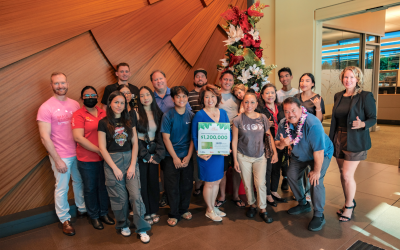 Too often we hear in the news that a fresh vegetable or fruit is implicated in a potential foodborne illness. Aside from discarding affected products when announced, what is the proper way to handle and wash fresh produce?
Too often we hear in the news that a fresh vegetable or fruit is implicated in a potential foodborne illness. Aside from discarding affected products when announced, what is the proper way to handle and wash fresh produce?
The process starts with ordering! Use only approved vendors, and do not over-order. A full case of celery or lettuce may be cheaper, but if you need to discard or trim off moldy or limp sections after a couple of days, that is no bargain. When checking in an order, open boxes and bags. Make sure all items are fresh, crisp, not moldy. Properly store produce at the proper temperature, and never under or touching potentially hazardous foods. A good practice is to look thru each box for any items that are bad. Oranges, Lemons, Apples, Potatoes and Onions frequently have 1 piece that is soft or develops mold. You know the old saying about 1 bad apple… onions or potatoes are usually kept in your dry storeroom and a single rotting piece can attract filth flies. I’ve even seen larva in rotted potatoes.
We finally get to the washing!! Make sure the work area and sink is properly sanitized. If you have a good sized kitchen, having a sink dedicated to washing produce is great. Avoid putting the box – the bottom is usually filthy – on the work station. Before handling the produce – wash hands. Wash your produce before cutting. Shake and spread the leaves (if possible) in the water. Most potential bacteria, pesticides or dirt will be washed off. When you cut the item, weather it is lettuce or melons, any contaminants on the exterior can get spread into the cut areas. Once leafy items are cut, a second rinse in a fresh sink of water helps.
There are several anti-microbiological vegetable washes available. Check with your chemical supplier about this extra protection. Using 1 teaspoon of bleach per gallon and soaking for 10 minutes is somewhat effective in reducing pathogenic bacteria, but some say there is a bleachy taste left on the lettuce, and it is too easy to measure incorrectly, so I don’t really suggest it.
A relatively new comer is using Ozone water. Without getting too scientific, regular tap water is electrically treated to convert the water, and this treated water breaks the cell walls of contaminants to wash them away, thereby making them safer. There are freestanding as well as installed systems available. There were at least 2 vendors at the recent industry show at the Blaisdell.
To learn more detail about Food Safety procedures, or to set up an independent discounted audit of your facility, please contact Peter Bellisario of PeterBFoodSafety.com at peter@peterbfoodsafety.com or (808) 491-7766. Check out my website – www.PeterBFoodsafety.com




0 Comments